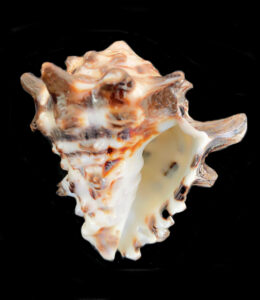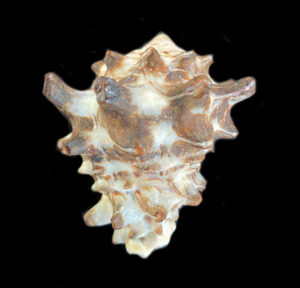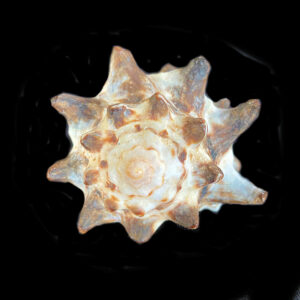Common Pacific Vase Shell, Vasum turbinellus


 Common Pacific Vase Shell, Vasum turbinellus. Shell collected off the beach at Punta Chivato, Baja California Sur, December 2021. Size: 7.0 cm (2.75 inches) x 6.4 cm (2.5 inches). Photograph and Identifications courtesy of Colin Campbell, DVM, Punta Chivato, Baja California Sur.
Common Pacific Vase Shell, Vasum turbinellus. Shell collected off the beach at Punta Chivato, Baja California Sur, December 2021. Size: 7.0 cm (2.75 inches) x 6.4 cm (2.5 inches). Photograph and Identifications courtesy of Colin Campbell, DVM, Punta Chivato, Baja California Sur.
The Common Pacific Vase, Vasum turbinellus (Lamarck, 1758), is a gastropod mollusk that is a member of the Turbinellidae Family of Pagoda and Vase Shells. They are also known as the Ceramic Vase Shell.
The Common Pacific Vase shell is large, solid, turbinate, strongly spined and heavy shelled with a low spire with small and large blunt spines on the shoulders and whorls. Their columella has five or six folds. They have seven to nine whorls with the body whorl bearing eight or nine stout, blunt, upward pointing spines at the shoulder with a similar row of smaller spines immediately below. The middle of the whorl has two spiral cords which have eight to fifteen small knobs. At the base of the shell there were three rows of seven or eight bluntly conical spines. The suture is indistinct and wavy. Their periostracum is thin, weakly foliaceous and grayish yellow or gray-brown. The operculum fills most of the inner aperture, is corneous, blackish and unguiculate.
They are white with brown blotches, the aperture is yellowish-white and the outer lip has short teeth and is blotched with black. They are found within rocky shores, shallow reefs and sand and coral rubble at depths up to 10 m (30 feet). They take shelter at night under rocks. The Common Pacific Vase have a maximum of 11.5 cm (4.5 inches) in length, with a spire that can be up to 9.5 cm (3.5 inches) in length.
The Common Pacific Vase is common throughout the Indio-Pacific, from east Africa to western Polynesia. We believe the shell photographed above is indeed a Pacific Vase Shell and its collection documents its presence in the Sea of Cortez.
Synonyms include Murex turbinellus, Turbinellids cornigera, Turbinellids variolaris, and Volutella nigra.